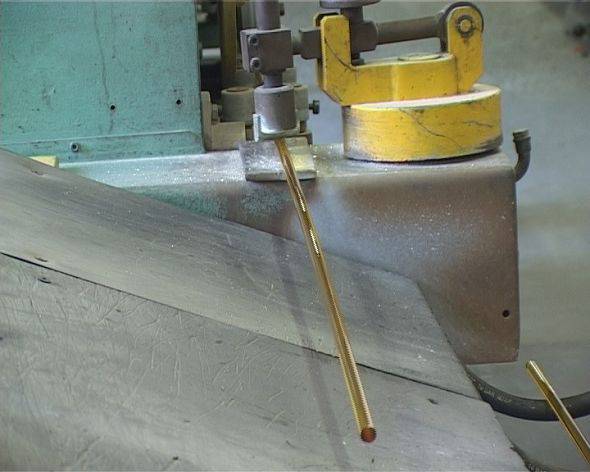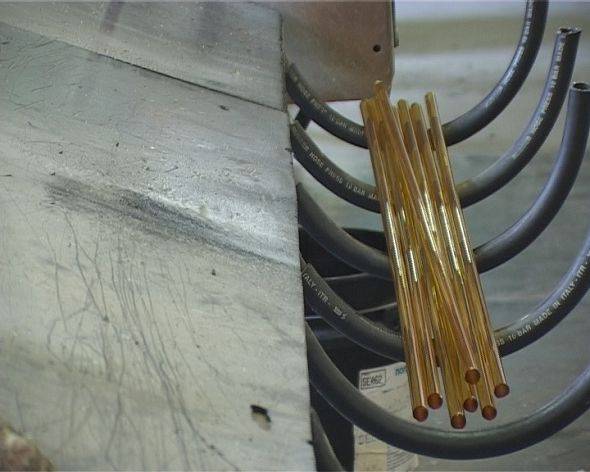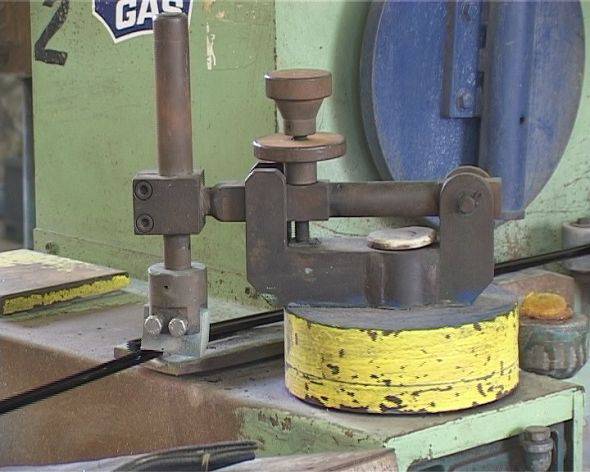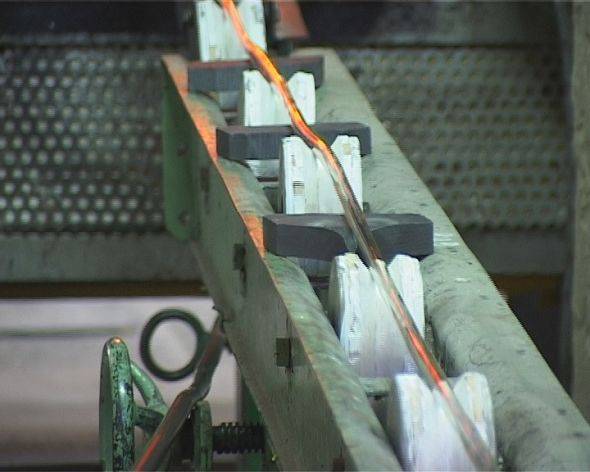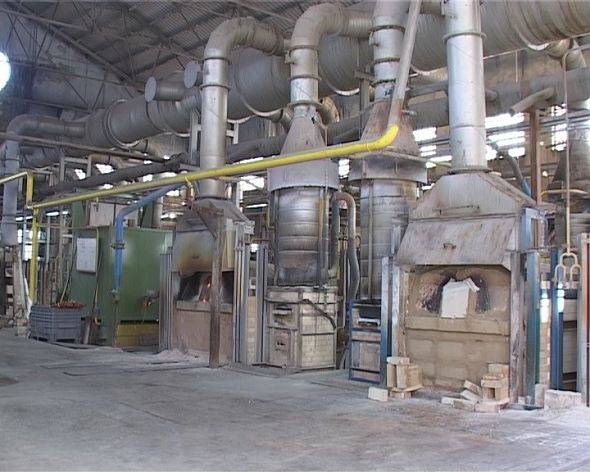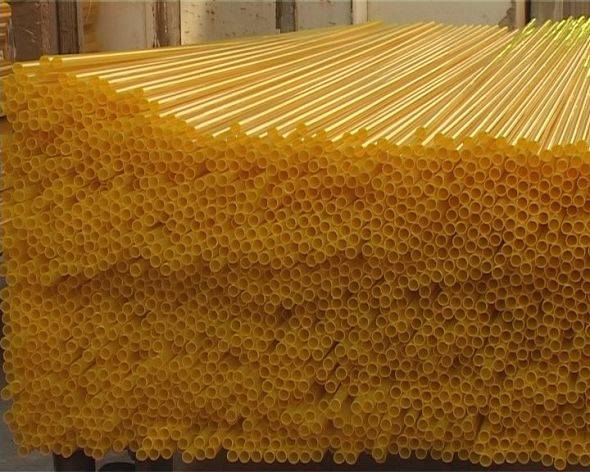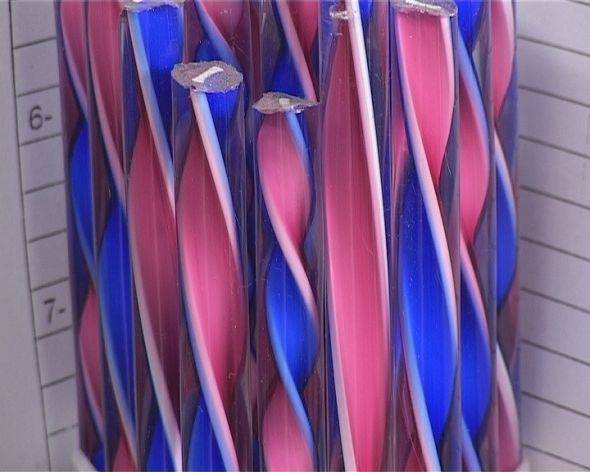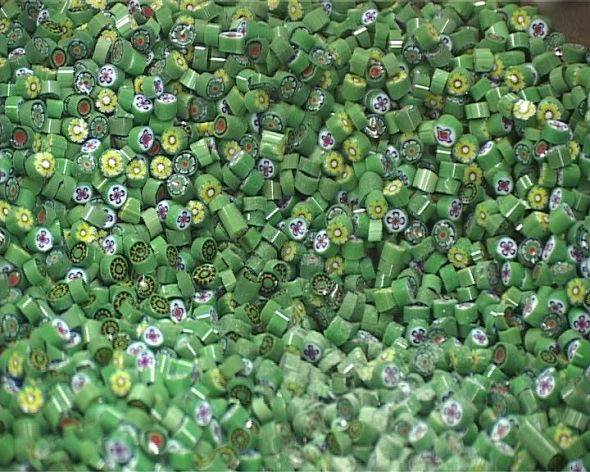This automatic process is the most practical and flexible system for the production of glass tubes with diameters from 5 to 50 mm and thin walls: this range of measurements includes almost all tube production.
The Danner machine consists of a tube made of refractory material, placed on a special steel shaft (spindle), rotating around its axis, on which a continuous flow of glass is dispensed from the feeder. In this phase of working, which is the area where the tube begins to take form, it is important that the flow of glass be constant so that it is uniformly wound around the rotating spindle. The glass which is dispensed from the feeder must be sufficiently fluid to enable it to spread along the tube-shaped spindle and reach the final part, where the glass is blown and moves away from the spindle in the form of a tube with an homogenous and uniform appearance. The spindle is placed in a furnace with adjustable temperature to avoid thermal shocks to the glass, which would be seen as anomalous thicknesses in the wall of the tube. To facilitate and make uniform the winding of the molten glass, the spindle must also be inclined (between 12 and 20 degrees) and the rotation speed must be as stable as possible. Also, the concentricity and axiality of this rotating movement is very important to avoid banging and shaking which can alter the delicate thermal and dynamic balance of the molten glass on the spindle.
The support shaft consists of an axial cavity through which air is blown to avoid, out of the spindle, the tube closing on itself.
The glass tube, which is being formed, is initially stretched by hand, placed on the graphite rollers of a slide-track, until it reaches the tractor, that is, the machine which stretches it automatically, in production, and rotates the tube to compensate the rotating movement of the spindle thereby avoiding flattening and oval-shaping.
Right after the tractor, the tube is cut at a length which is slightly longer than its final use length. This is a rotary device, which is synchronised with the stretching speed, which brushes along the glass at the cutting point with a tool moistened with water. So that the tube gets to this point with a temperature of about 200-280°C, thermal shock is enough to break it.
At the end of the production line, a selector device automatically sends tubes whose diameter is not within the prescribed tolerance to a crusher, while the good ones go straight to a machine for cutting and burning of the edges.
To continuously measure the diameter, an external diameter reading device is installed on the cooling-track. The device currently in use is a laser with which the measurement is very precise; also, given that the reading is often carried out not with mechanical means, and thus without contact with the tube, damaging the surface is avoided and consequently so is the breaking of it, which would interrupt the continuity of production.

